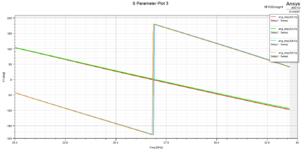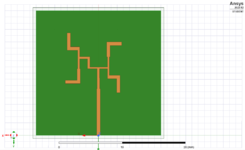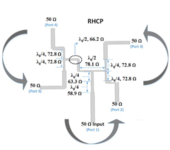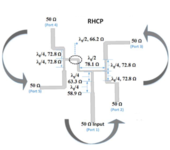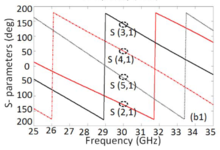StinkyFetus
Newbie
Hello
I am working on an parallel antenna feeding Network for RHCP with 4 output ports. The design consists of three parallel (T-junction) sections.
The first section of the feeding network is an anti-phase equal power divider, which provides 180° phase difference. The power divider is connected to each of the anti-phase divider’s output ports with a 90° phase shift between the two output ports. Each output (and the input) is connected to a 50Ω microstrip line which is connected to four 50Ω ohm lumped ports.
I am expecting 4 output signals with 90° phase difference between each port. In the simulation result i can see the 180° phase difference from the anti-phase equal power divider but the not the 90° phase difference (see images). I am wondering, is the an error to my design or possibly an error in the way I palce the ports. I have tried to remove the 50Ω microstrip line and connecting each output directly to 50Ω ohm lumped ports.
(Project files included)
Design parameters:
Frequency = 28 GHz
Substrate height = 0.254 (er = 3)
Trace height = 0.035
I am working on an parallel antenna feeding Network for RHCP with 4 output ports. The design consists of three parallel (T-junction) sections.
The first section of the feeding network is an anti-phase equal power divider, which provides 180° phase difference. The power divider is connected to each of the anti-phase divider’s output ports with a 90° phase shift between the two output ports. Each output (and the input) is connected to a 50Ω microstrip line which is connected to four 50Ω ohm lumped ports.
I am expecting 4 output signals with 90° phase difference between each port. In the simulation result i can see the 180° phase difference from the anti-phase equal power divider but the not the 90° phase difference (see images). I am wondering, is the an error to my design or possibly an error in the way I palce the ports. I have tried to remove the 50Ω microstrip line and connecting each output directly to 50Ω ohm lumped ports.
(Project files included)
Design parameters:
Frequency = 28 GHz
Substrate height = 0.254 (er = 3)
Trace height = 0.035
Attachments
Last edited:
